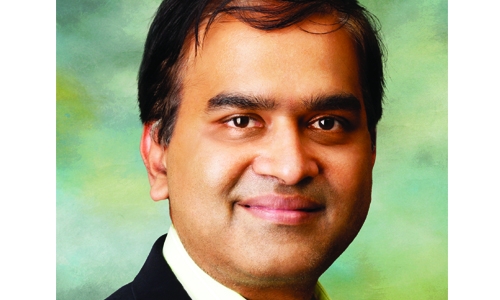A brave new cyber-world
Manama : The MENA Centre for Investment was launched in 2006 by the Bahrain Economic Development Board to promote results-oriented policy dialogue between MENA and OECD practitioners. The Centre jointly with International School of Engineering (INSOFE), counted among the top three in Big-Data Education along with Columbia and Stanford Universities, will be conducting Big Data Analytics training in the Kingdom.
Dr. Dakshinamurthy Kolluru, president of INSOFE and advisor for multiple start‐ups in Data Science speaks to DT News about Big Data and its importance. Here are some excerpts from the interview:
Big Data is not a term familiar to all. What could be an appropriate real life example to demonstrate this concept?
The most straight-forward example is Google search. For any keyword that you type in, Google searches 100s of billions of records in a second and sorts them appropriately and delivers. Google is able to do this using Big Data technologies. It is not just in Google and Facebook that people use Big Data.
Let us say a telecom company wants to identify the time of the day customers are talking more so that they can enhance capacity. Let us say they have 10 million subscribers and they need to check the talking patterns across every hour of the day for the past 12 months to calculate this. They will have to look at 10 million people 24x365, covering more than 8 billion records.
Previously, companies could simply not handle such data. But today, this can be done in almost real time.
The training course brochure of the upcoming MENA-INSOFE programme promises to cover a host of deep topics like open data, machine learning, past mistakes in decision making: particularly in economics, data mining and neural networks. Who should be attending this course? Is it designed for senior executives in public and private sector?
We will teach a lot of concepts and also provide training on tools that help them execute these well. So, this programme is well suited for mid-level and senior executives, who want to be more cutting edge in their jobs.
In his book Rise of the Robots: Technology and the Threat of a Jobless Future released last year, Martin Ford warns about a future of mass unemployment. The ability of machines and ability to grow their intelligence on their own by delving deep into Big Data are discussed. How do you see this?
When steam engines came in, people were worried about loss of jobs. Industrialisation created more jobs than any time in the history and led to unprecedented economic growth.
When computerisation came in 1980s, people again thought jobs would be lost. But the past three decades saw many poor countries becoming economically vibrant, thanks to IT industry.
New technologies create more jobs, push faster development and growth. The challenge would not be lack of jobs. The challenge would be lack of skilled people to do these new-age jobs. Hence, we must focus on developing these skills and take the technologies under our control. That is the goal of MENA-INSOFE programmes.
What are the essential skills for the future? Can future generation choose to learn coding?
Statistical thinking and software programming should be as essential as physics and chemistry in education.
How should our education system incorporate the effects of this change? What can be done better to prepare our future generation for the challenge? How can we incorporate courses like this into our school and
college education?
Mathematics, statistics and programming curriculum must be applied. Children should see them and learn them in context. Global collaborations and government support will be essential to bring these changes.
What measurable impact will your programme have on its participants? How will it help them in their career?
After the programme, every participant will be able to take relevant data and come up with interesting insights. They will be able to interpret complex models and their results intuitively. They will be able to visualise the results in a way the non-practitioners of data can understand. Most importantly, they will be able to apply these in their day-to-day work.
Related Posts

